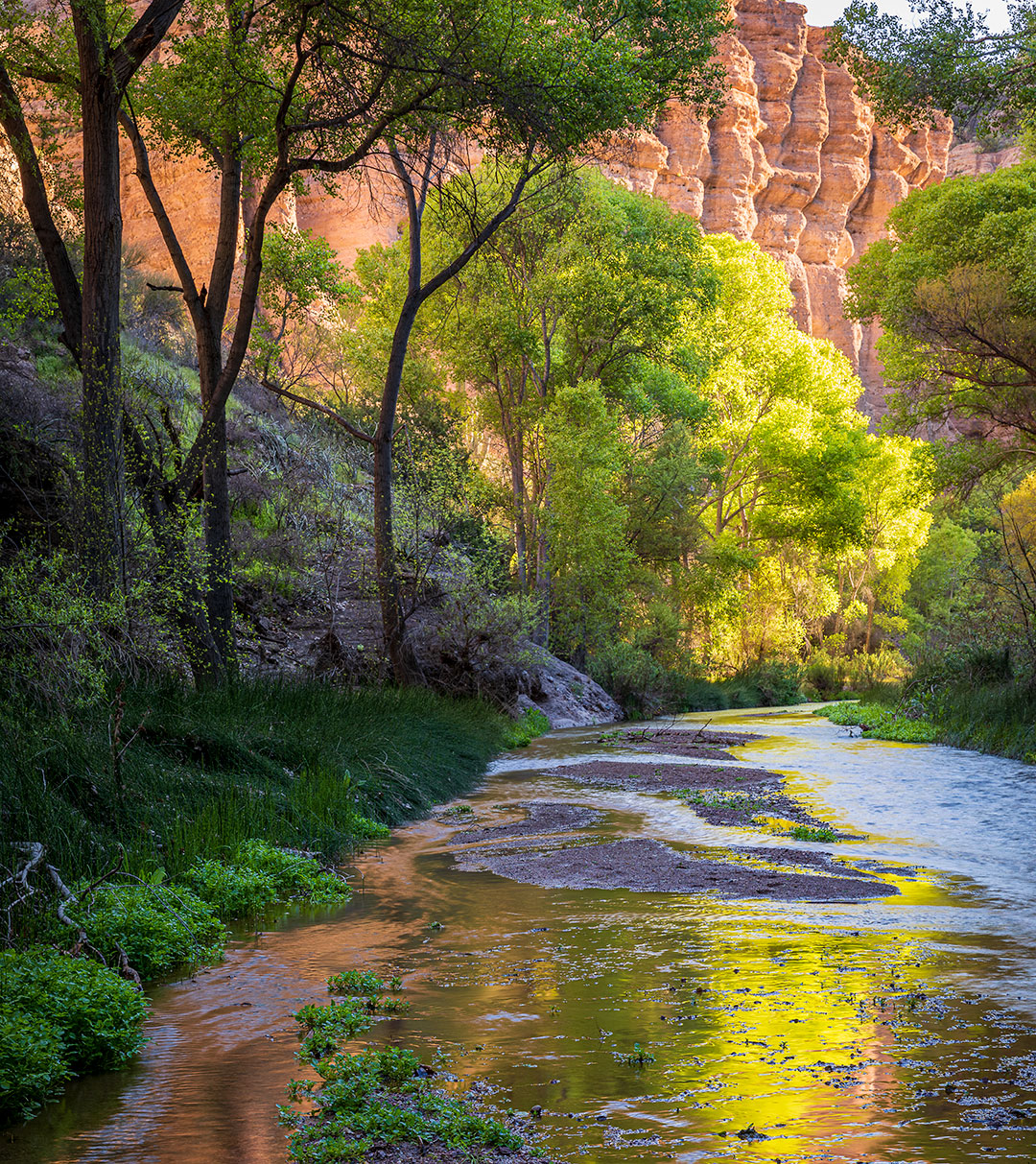A Q&A with Photographer Jeff Maltzman
Editor’s note: Tucson-based photographer Jeff Maltzman's Aravaipa Canyon portfolio appears in the August issue of Arizona Highways.

Arizona Highways: When did you first visit Aravaipa Canyon, and how would you describe that experience?
Jeff Maltzman: I first visited the the canyon on a day hike with friends in late spring, a few years after moving to Arizona from the Northeast. It was a fairly warm day, and I recall how refreshing the cool water felt on my legs and how unexpectedly lush the vegetation was for a location in the middle of the Sonoran Desert. I was also struck by the tranquility and absence of other hikers, unlike many of the popular trails close to my home in Tucson. I felt an immediate connection to the canyon and knew that I would visit again, which I've done countless times over the last decade.
AH: Do you have a favorite time of year to visit the canyon?
JM: While the canyon is beautiful nearly any time of year, late autumn is utterly spectacular, as the cottonwoods and several other species shed their summer greens to reveal stunning hues of gold and orange. Daytime temperatures are wonderfully pleasant, inviting long hikes and exploration of the many side canyons. Wildlife is plentiful and active, preparing for winter's more meager offerings. The days are shorter, and as the sun falls beyond the horizon, the canyon quickly sheds the afternoon's warmth. The campfire set, my companions and I pull on our sweaters and gather around, bodies and spirits nourished by the flames. Music. Stories. Jokes. The company of great friends. And then a quiet, long evening's rest under the brilliant sky decorated with countless stars.
AH: What’s the most interesting animal you’ve seen there, whether along the creek, in the air or amid the rocky slopes of the canyon itself?
JM: I've enjoyed seeing many animals in the canyon, including deer, javelina, bighorn sheep, raccoon, skunk, snakes, lizards, frogs and fish, as well as countless bird species. However, the most intriguing critter I've enjoyed is the coatimundi. This more slender relative of the raccoon is native to South and Central America, Mexico and the Southwestern United States. Unlike the raccoon, coatis are diurnal, but may be active during the night as well. Excellent climbers, they tend to nest or hide in trees or on high perches, and I've been surprised more than once by one or several scampering down a tree or retreating up a cliff face. Males tend to remain solo, while females band together in groups of up to twenty individuals. And, frankly, they're just very cute.
AH: What’s your favorite backpacking snack?
JM: Jerky — beef, pork, or turkey — is my favorite hiking snack, and is nearly always in my pack. I'm also a fan of rice cakes, as they're light, filling, and come in numerous flavors.
AH: If you had to describe Aravaipa Canyon in three sentences or less, how would you describe it?
JM: Aravaipa is a true oasis and paradise, an unexpected treasure in the otherwise harsh desert landscape. Formed and nourished by a perennially flowing, spring-fed creek, the canyon is a surprisingly lush home to countless species of plants and animals, many of which would otherwise not survive in this arid environment. For me, and for all those who know the canyon well, Aravaipa is a gift, a tranquil respite from the challenges of daily life.
AH: What’s the most important thing for Arizona Highways readers to know about Aravaipa?
JM: Aravaipa was designated a national wilderness area by Congress in 1984, and entrance to the canyon from either its west or east end is managed by the Bureau of Land Management. To protect the fragile riparian environment from overuse, access is limited to 50 visitors per day for a maximum stay of three days within the canyon. Permits are only available online and cannot be obtained at the trailheads, so plan your visit well ahead. Leave No Trace principles should always be followed and are vital to maintaining the canyon for the fauna and flora that call it home, as well as for future generations of visitors.
For more great reads from around Arizona, subscribe to our digital edition today for immediate access to the August issue of Arizona Highways.
